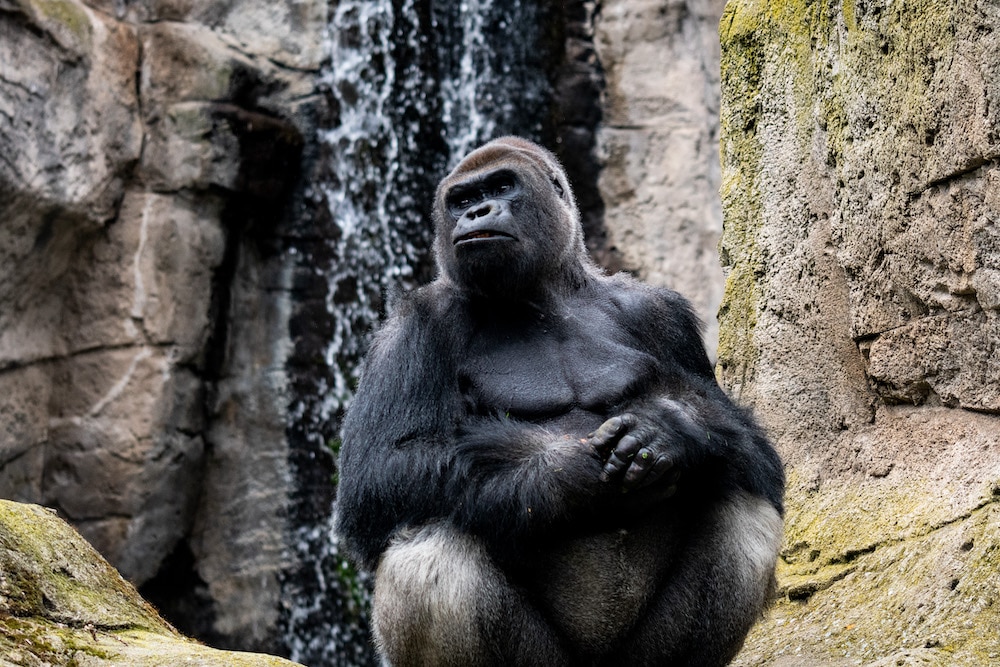Create a free profile to get unlimited access to exclusive videos, sweepstakes, and more!
Gorillas are inventing new words for communicating with humans
Someone call Merriam-Webster.

The character of Doctor John Dolitte has remained popular for more than a century, boasting animated movies, radio plays, stage plays, and several live action films, the most recent of which released in 2020 and starred Robert Downey Jr. in the title role. The character's popularity rests on a unique ability to understand and communicate with non-human animals. That’s something many of us secretly wish we could do.
It seems clear that many animals do have language systems of varying complexity and some of the most complex exist within populations of other primates. Chimpanzees, for instance, have been observed using specific calls to rally hunters and chase down monkeys for a protein-rich meal. Vocal communication in non-human primates is a well-documented phenomenon and understanding what specific calls mean and how they’re used is something scientists are continually striving to determine. Of course, that endeavor becomes more complicated when animals start inventing new words.
A new study by University of Georgia and Zoo Atlanta scientists, published in the journal PLOS ONE, describes a novel vocalization observed in gorillas which appears to be reserved for communication with humans.
One of the researchers first observed the new call, a sound somewhere between a sneeze and a cough, at Zoo Atlanta. They noticed the gorillas only seemed to use this call, which they have named the “snough,” when zookeepers were nearby and in possession of food. They were curious, however, if the gorillas used this novel vocalization at other times. To find out, they designed some simple observational experiments to isolate the variables at play.
Eight gorillas at Zoo Atlanta were observed when a zookeeper was nearby, when food was nearby, and when a zookeeper with food was nearby. They found that if only a zookeeper or food was present, the gorillas remained more or less quiet, but if both were present at the same time, snoughing commenced.
Researchers have interpreted those results as meaning that the snough is a targeted vocalization intended to get the attention of humans and make a request of them. If it were only about getting the attention of a human, it should occur whether or not there was food, and if it were only about communicating the desire for food it might occur without a zookeeper being present, but it only happens in situations where getting the attention of a keeper might result in gaining access to food. Moreover, this vocalization has never been observed in the wild and, as such, appears to have been invented solely for our benefit.
Interestingly, the vocalization is not only occurring at Zoo Atlanta. Researchers across the United States and Canada have confirmed use of the snough in at least 19 separate zoos. Notably, it’s unlikely that gorillas in such disconnected settings would somehow have learned this call from one another. Instead, it appears as though the call has emerged independently as a consequence of human interaction.
Researchers aren’t entirely clear on how it might have emerged, but one hypothesis suggests gorillas might be manipulating us by leveraging previous interactions to garner attention from keepers. A cough or a sneeze typically indicates illness and is something a zoo keeper is likely to pay special attention to. In essence, the gorillas are basically faking sick in order to get us to pay attention to them and it’s working.
Gaining a greater understanding of primate communication doesn’t only serve to reveal how they talk with one another and with us, it might also help to explain how human language emerged in the first place. Humans are obviously capable of creating new vocalizations to communicate new desires or ideas and if other primates are able to do the same, that could suggest that this trait emerged in a common ancestor. We’re basically using the same evolutionary software, with slightly different biological hardware, and that’s what makes the difference between Shakespeare and a weird sneezey coughy combination when you want some grapes.


























